General election 2019: Who have parties been targeting on social media?
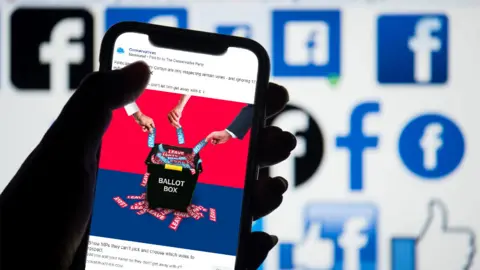 PA/Conservative Party
PA/Conservative PartyPosting on social media is a great way for a party to get its message to supporters. But how do you reach a new audience beyond those friends and followers?
That's where paid-for advertising comes in. By paying for an advert the parties can put their message in front of a specific audience.
This way they can reach those who are outside the circle of people sharing political memes and news with their friends and followers.
Following controversy about ads it displayed during the 2016 US Presidential election campaign and the UK's EU referendum, Facebook committed to more transparency over political adverts on its platforms.
The result is Facebook's Ad Library, which allows anyone to see the paid-for political content posted on Facebook and Instagram.
So what does the data in the Ad Library tell us about the first week of campaign advertising?
Targeting battlegrounds
Parties can choose to show adverts to people in specific locations but the only location data provided in the Ad Library is at a national level - e.g. Scotland.
We know some of the places the Conservatives and the Brexit Party have been targeting, because they told us in the adverts themselves.
The Conservative Party has been running a group of 30 almost identical paid-for adverts but each one focuses on a different constituency, showing the number of votes that would have won the Conservatives the seat at the last election.
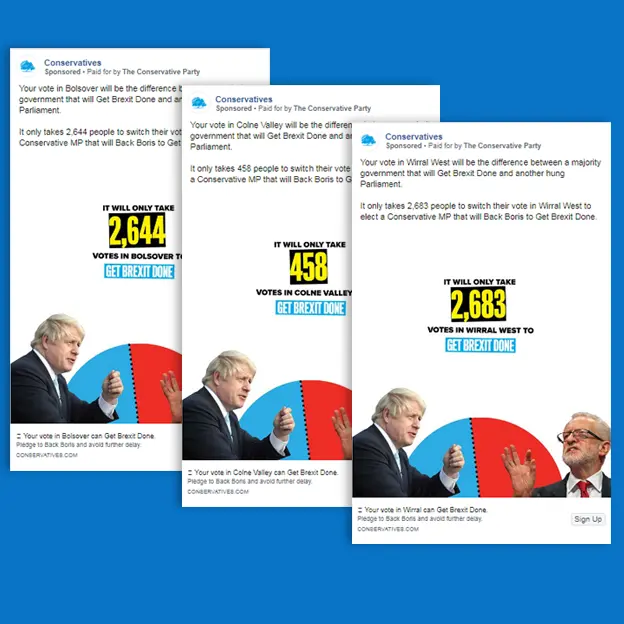 Conservatives
ConservativesThe Brexit Party also have an advert where we can definitely identify the constituency - Barking, in Essex, which they are saying the Conservatives have never won.
There are also adverts that appear to be targeted by location but because they just talk about "here", it's not possible to know where exactly. Labour have run adverts saying "The Liberal Democrats can't win here", which are clearly aimed at voters in a certain towns or cities.
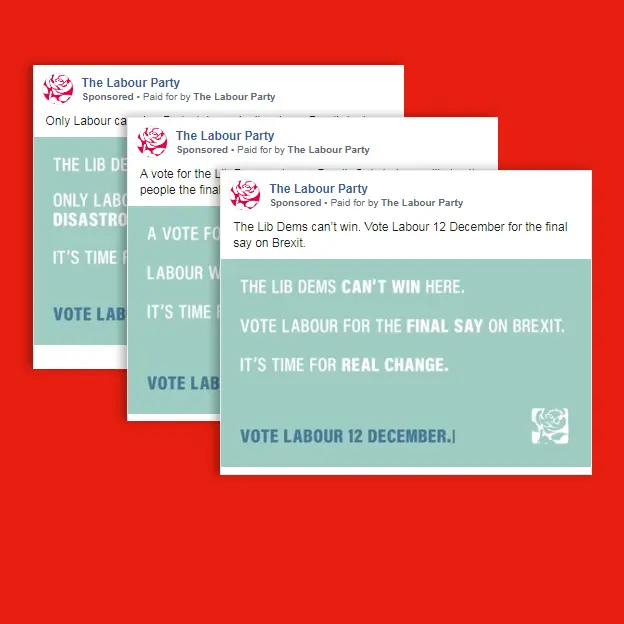 Labour Party
Labour PartyPlus, there will be other adverts which are likely being targeted by location with no clue in the content.
Targeting older men
Parties can also choose who their paid-for adverts are shown to by gender and age. The Ad Library provides a breakdown for each advert.
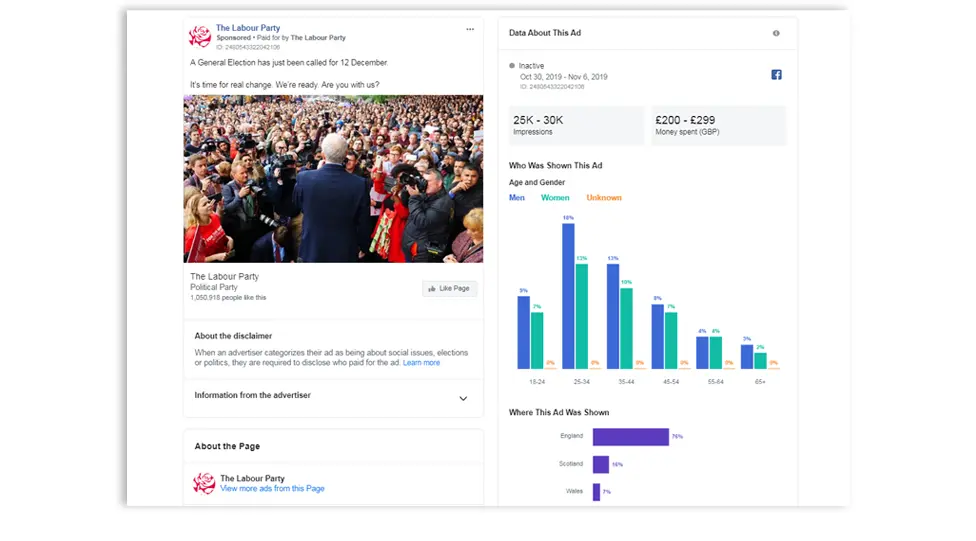 Facebook
FacebookThis week the adverts showing the strongest bias for age and gender were mostly aimed at men.
The Brexit Party have published two videos criticising Boris Johnson's Brexit deal. Both are being shown much more to men over the age of 45 than they are to women or young people. If you are under the age of 25, there is very little chance you would have seen either of these videos.
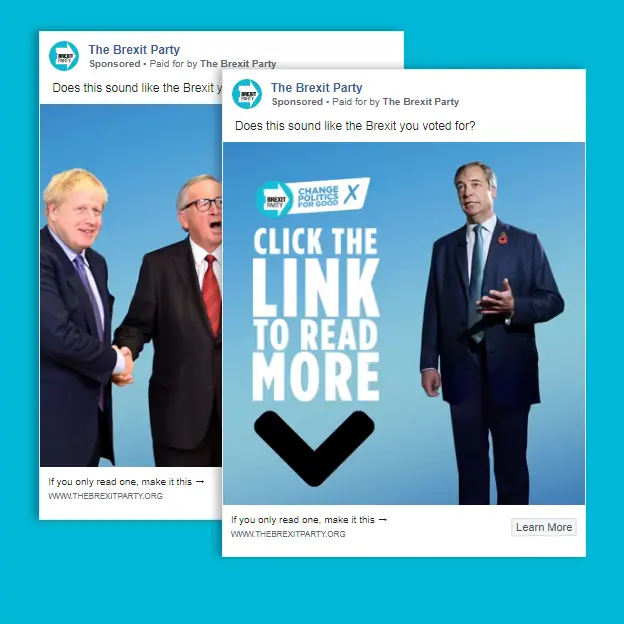 Brexit Party
Brexit PartyAt the other extreme, the Conservatives released a video which was seen more than 100,000 times in the first 24 hours and was only shown to men under the age of 35. According to the data on Facebook this ad has not been seen by any women or anyone over the age of 35.
The Liberal Democrats have run a group of ads with a variety of slogans attacking Jeremy Corbyn which was shown mostly to middle-aged men. They've also put out another set promising skills and training opportunities, again with a strong bias towards men.
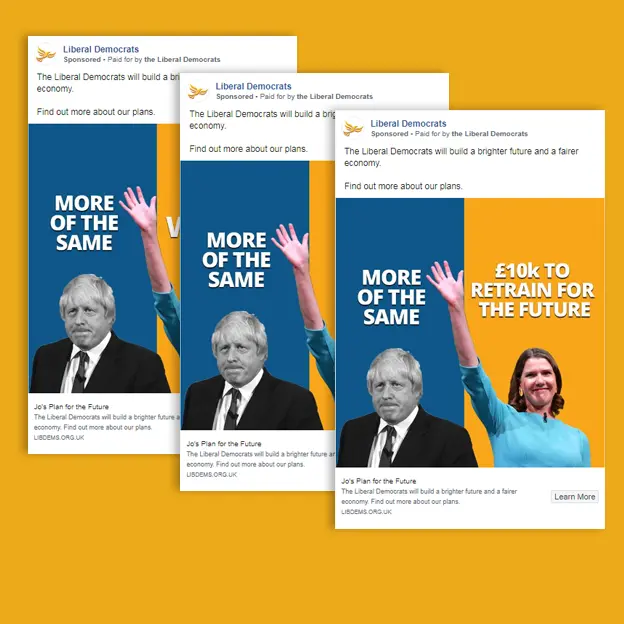 Liberal Democrats
Liberal DemocratsOn the other hand, Plaid Cymru, in Wales, ran an advert promising free social care, and seen mostly by women over the age of 45.
 Plaid Cymru
Plaid CymruBut for most adverts, across the board, the picture is more mixed. Some are being seen more by men than women or shown to an older rather than younger audience.
The Labour Party hasn't yet run any adverts which are so sharply targeted; a fundraising advert leaned a little towards men, an anti-fracking one slightly towards women. Other parties, such as the SNP and the Green Party, have not, at the time of writing, paid for any ads since the start of the campaign.
What about elsewhere on social media?
It appears the political parties have far fewer adverts compared with the number of posts appearing on their official accounts and most of the paid-for content is on Facebook and Instagram.
Twitter has announced that it will be banning political ads from the 21 November.
But in fact there have been virtually no paid-for tweets on Twitter by political parties in the UK over the past week. Instead the parties are focusing on getting re-tweets from their followers.
It's the same on Snap and YouTube, with very limited if any spending by the parties.

How we collect and analyse the data
We used Facebook's ad library to analyse all currently active political ads funded by the major UK parties.
 Facebook
FacebookThis includes ads run by parties' main Facebook pages, party leaders' pages, and national party pages for Scotland and Wales.
Ads are only included in the library if they have been flagged by the advertiser as being about social issues, politics or elections.
All political parties in the UK would be expected to flag their paid content.
Information about major UK party campaigns correct as of 7 November.
